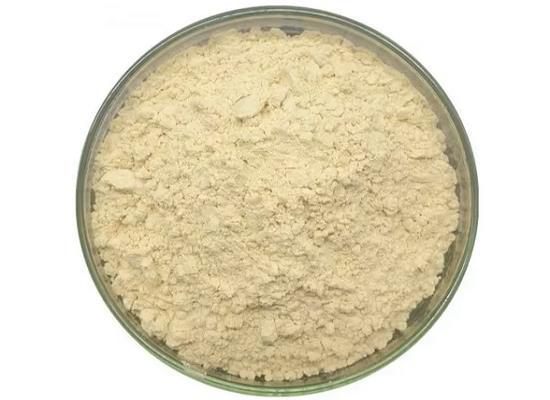Glutaric Acid: Advancements in Cancer Prevention and Industrial Production
General Description
Glutaric acid is gaining prominence due to its applications in cancer prevention and as a key building block in industrial chemistry. Its ability to inhibit beta-glucuronidase activity suggests a role in mitigating cancer risk, particularly in hormone-dependent cancers. Research indicates that additional intake of glutaric acid might be necessary for therapeutic benefits. Advances in metabolic engineering, particularly using Corynebacterium glutamicum, have enhanced glutaric acid production through the introduction of specific genetic pathways and optimization of fermentation conditions. This approach has yielded substantial production levels, highlighting glutaric acid's potential for both health benefits and industrial applications.

Figure 1. Glutaric acid
Applications
Cancer Prevention and Metabolic Regulation
Glutaric acid has garnered significant attention over the past two decades regarding its metabolic functions in the human body. In mammals, glutaric acid and its lactone derivative serve as terminal products of the uronic acid pathway, effectively inhibiting the activity of beta-glucuronidase. This enzyme, present in the gut, catalyzes the conjugation of glucuronic acid with various toxins and substances like bilirubin, potentially converting pro-carcinogens into active carcinogens and contributing to conditions such as gallstone formation. D-glutaric acid and its derivatives play a substantial role in biochemical processes that regulate the hormonal environment within the body. This includes reducing levels of steroids and certain non-steroidal compounds, such as prolactin. These actions are believed to provide a chemical defense against various cancers, including esophageal, colon, hormone-dependent breast cancer, liver, skin, and bladder cancers. 1
Therapeutic Potential and Detoxification Properties
Recent studies indicate that glutaric acid can lower the activity of beta-glucuronidase, thereby assisting in reducing the burden of glucuronidated estrogen, which may mitigate the risk of breast cancer. While animal studies support this possibility, clinical trials evaluating the impact of D-glutaric acid as a nutritional supplement in breast cancer prevention or treatment are still lacking. Furthermore, the lactone form of glutaric acid exhibits potent detoxifying and antioxidant properties. It has been shown to inhibit the apoptosis of pancreatic beta cells, alleviating diabetes induced by alloxan. Additionally, glutaric acid can mitigate intestinal mucosal damage caused by compounds such as irinotecan. Due to the minimal amounts of glutaric acid found in fruits and vegetables, dietary intake is often below levels needed to effectively inhibit beta-glucuronidase. Therefore, additional consumption of D-glutaric acid and its derivatives is necessary to achieve disease prevention and therapeutic benefits. 1
Production by Metabolic Engineering
The industrial demand for five-carbon platform chemicals, particularly glutaric acid, has prompted extensive research into developing efficient production methods. Glutaric acid serves as a fundamental building block for synthesizing polyesters and polyamides, making it highly valuable for various applications. A significant advancement was achieved through systems metabolic engineering of an L-lysine-overproducing Corynebacterium glutamicum BE strain. By introducing a carefully constructed synthetic metabolic pathway that includes genes such as Pseudomonas putida L-lysine monooxygenase and C. glutamicum 4-aminobutyrate aminotransferase, researchers created a more efficient microbial system for glutaric acid production. This pathway allows for enhanced conversion efficiency and maximizes the utilization of available resources within the organism. 2
Optimization Strategies for Enhanced Glutaric Acid Production
To further improve the efficiency of glutaric acid production, a systematic approach involving genome-scale metabolic simulation and comparative transcriptome analysis was employed. Eleven target genes were identified and manipulated to optimize the supply of the direct precursor L-lysine while minimizing any precursor loss. Additionally, the discovery and overexpression of a glutaric acid exporter encoded by the ynfM gene significantly contributed to the enhanced production of glutaric acid. Beyond genetic modifications, fermentation conditions such as oxygen transfer rates, glucose levels during the batch phase, and nutrient feeding strategies were meticulously optimized. The result of these comprehensive efforts was a remarkable production yield of 105.3 grams per liter of glutaric acid within 69 hours, achieved without generating any byproducts. This innovative approach in metabolic engineering and fermentation optimization not only advances the production of glutaric acid but also sets a precedent for developing engineered microorganisms for producing other valuable industrial chemicals. 2
References:
[1] YUYING QIU. [Progress in glucaric acid].[J]. Sheng wu gong cheng xue bao = Chinese journal of biotechnology, 2015, 31 4.[2] TAEHEE HAN S Y L Gi Bae Kim. Glutaric acid production by systems metabolic engineering of an l-lysine-overproducing Corynebacterium glutamicum.[J]. ACS Catalysis , 2020. DOI:10.1073/pnas.2017483117.
You may like
See also
Lastest Price from Glutaric acid manufacturers

US $70.00/kg2025-08-30
- CAS:
- 110-94-1
- Min. Order:
- 1000kg
- Purity:
- 99%
- Supply Ability:
- 50 ton per month

US $1.00/kg2025-04-21
- CAS:
- 110-94-1
- Min. Order:
- 1kg
- Purity:
- 99%
- Supply Ability:
- 10 mt


